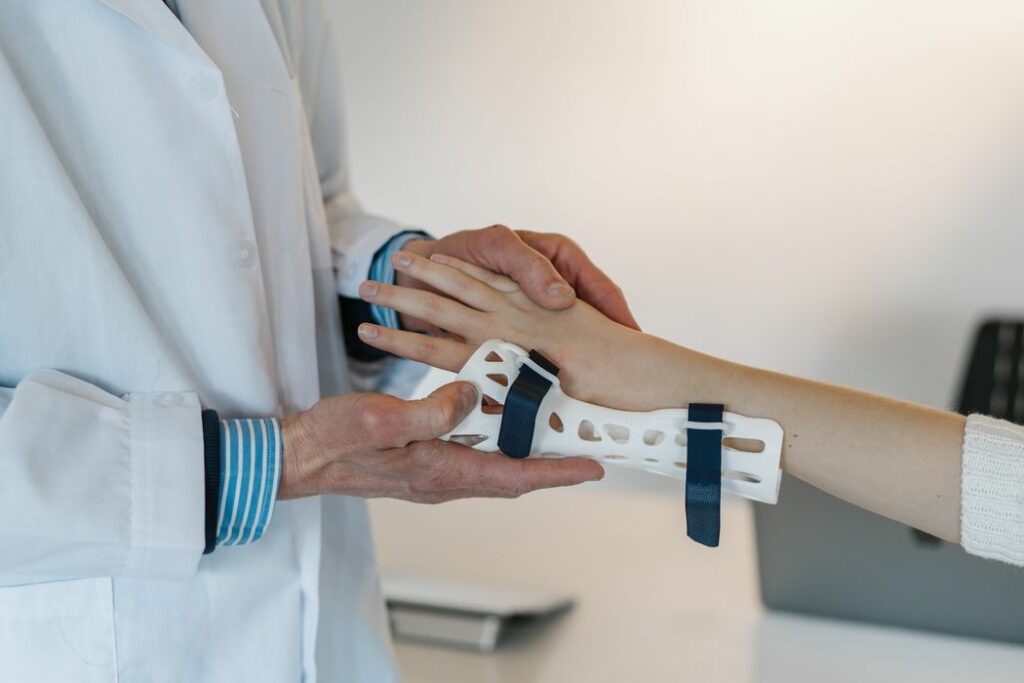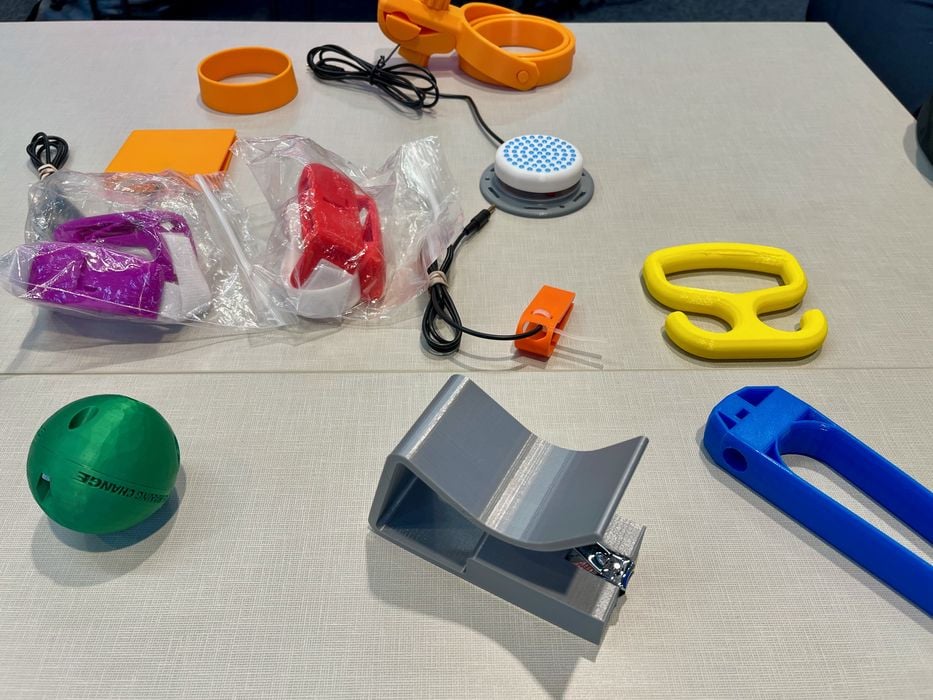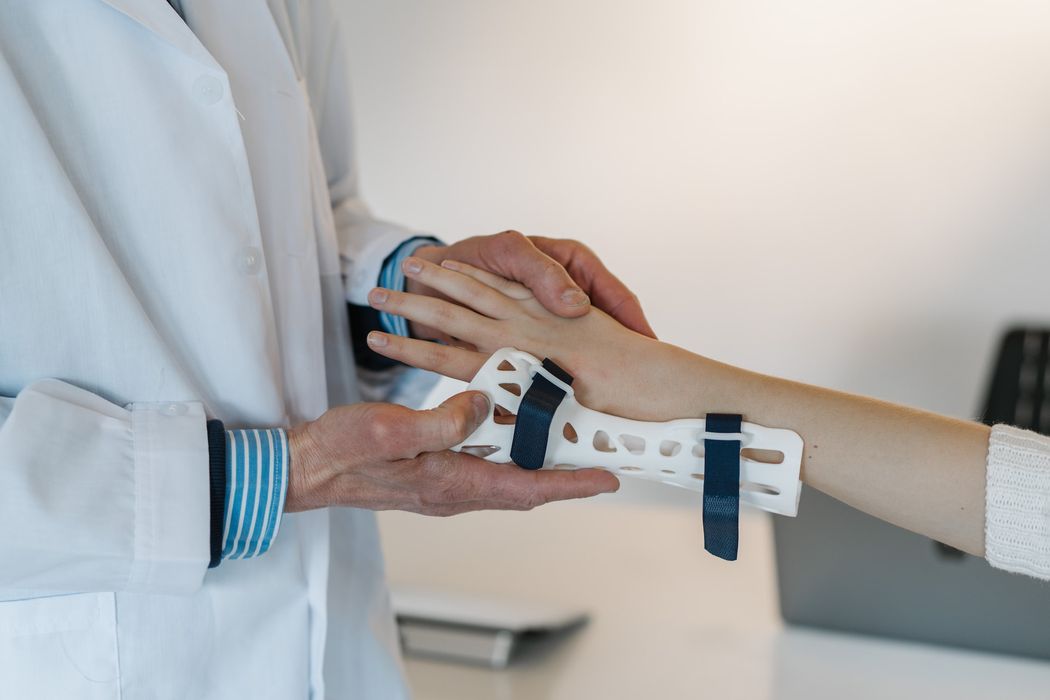
There are plenty of ways 3D printed items can help people with needs.
The past decade has seen a boom in 3D printing around the globe. The cost of 3D printing has fallen dramatically since Stratasys’ Fused Deposition Modeling patent expired and fell into the public domain in 2009. Since then, power has been given to innovative makers who model, print, and create 3D printed products. Predictions estimate that 3D printing will be worth US$40B by 2024, as more businesses and inventors get in on the act.
3D printing is about more than model toys and mind-bending structures. At its core, 3D printing is designed to help everyday people get access to the products and aids that they need at a reasonable cost.
3D printing is particularly useful for folks from lower socioeconomic status households, who may not have previously been able to afford goods and products that were otherwise made from metals and other expensive materials.
Sensory Gadgets
We’re all familiar with fidget spinners and stress balls. These devices are designed to help folks who may live with ADD/ADHD. Fidget spinners have been used in occupational therapy and are now popularized and marketed as toys. However, the efficacy of fidget spinners has been heavily debated, with researchers questioning if they are more of a marketing ploy than a true sensory aid. Proponents point to the fact that some neurodiverse individuals do seem to benefit from fidget toys.
People who are neurodiverse may think differently than those who are considered neurotypical. Adrian Kunemund, Ph.D., a psychologist in private practice in Atlanta, Georgia, explains that “there is no one single correct way for a brain to be.” Kunemund also emphasizes that those who wish to help should repeatedly ask “how can we help make our spaces inclusive so you can thrive?”
3D printing can offer neurodiverse individuals a more holistic form of intervention and care in response to Kundemund’s question. 3D printing can break the mold of what was previously possible with sensory aids like fidget toys. It can offer learning experiences and products that suit the needs of people who are considered neurodiverse. For example, 3D printed products can give neurodiverse individuals:
- Personalized equipment to aid attention/recognition;
- Adaptive clothing to help wearers focus on the task at hand;
- Sensory devices and puzzles to present information in new, visual ways.
As 3D printing becomes more cost-effective, more educators, students, and professionals will have the chance to experiment for themselves and find devices that work for them and serve their particular needs.
Aging Aids

Aging alone places wear and tear on the body. It’s little surprise that older folks need support from emerging technology and 3D printed implants, mobility aids, and even prosthesis.
There are plenty of ways to remain healthy and happy at an old age. Folks who have made it to their senior years should keep up a regular schedule or exercise, healthy eating, and constant learning. 3D printing can help facilitate healthy aging, as 3D printed products like hearing aids and ergonomic walking sticks reduce the cost of care for older folks and ensure they can live with independence and dignity.
3D printing for personal healthcare can even help older individuals from lower socioeconomic status households get the treatment and surgeries they need. Already, doctors and engineers are capable of 3D printing meniscus scaffolds — a common implant used in knee surgery for older patients. Biosynthetic implants, like those produced by 3D printing, can close the health gap and help everyone get access to the treatment they need.
Older individuals may even benefit from learning how to operate and print using 3D software and printers. Remaining curious about the world is a great way to stay “young” and most software is catered towards independent learning. Software offered by MakerBot tailors 3D printing toward students and allows folks of all backgrounds to experiment with design thinking and 3D printer operation.
New Opportunities
3D printing is quickly emerging as an equitable, egalitarian industry for all who have an interest and the desire to innovate. Students around the globe are using 3D printing to facilitate job opportunities. Students at Oxford Brooks University have even worked directly with industry-grade technology to 3D print their own Formula Student race cars.
3D printing may become particularly important in emerging economies and the Global South. Material costs and a history of exploitation have prevented folks in the Global South from entering experimental technology markets. However, as the average entry cost of 3D printing falls, new opportunities may emerge for all who have a creative mind and a love for design thinking.
Conclusion
3D printing is closing the care gap and helping people around the globe find new professional opportunities. Even elderly folks will benefit from 3D printing, as 3D-printed hearing aids and mobility tools can be tailored to fit each patient exactly at a relatively low cost. 3D printing may be particularly important in the Global South, where economic exploitation has put some groups at a disadvantage. 3D printing, which is becoming increasingly cost-effective, can benefit traditionally under-served communities and help create a more equitable future for all.

